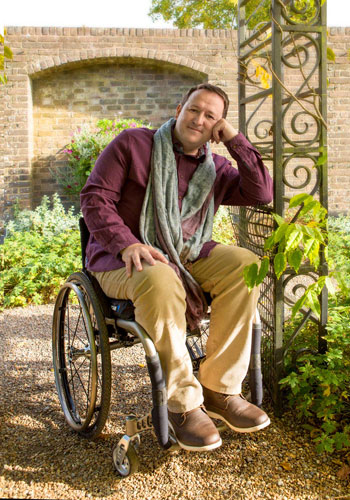Charles Dowding, the King of No Dig, writes on ‘easier gardening’
This week’s Guest Blogger:
Charles Dowding
”the king of no dig”
Easier Gardening
”Since 1982 I have been testing simpler and quicker ways to grow plants, and have always been impressed by the effectiveness of a no dig approach. My amazement is increased when I read so much advice saying the opposite, and giving the impression that soil preparation is complicated. It’s not, just the one thing is to mulch weeds throughly in year one, using variations of cardboard/compost/polythene to starve weeds of light, until they disappear, even couch grass.
The main thing is to feed soil organisms, so that they can be busy and breed and set up a thriving network of subterranean life. We don’t see them being busy but we see the result which is healthy plant growth. This comes from spreading compost on the surface, say 2-3in/5-7cm and just once a year.
The benefits include:
- there is much less weeding to do
- soil stays moist for longer because it’s mulched (covered) instead of being exposed to dry sun and wind
- in wet weather your feet are less muddy because undisturbed soil is less sticky
- fungal networks are preserved and they then pair with plant roots and help them find extra food plus moisture
- when water is applied to mulched and heavy soils, it soaks in quickly without smearing the surface.
A nice example is potatoes, they are so much easier no dig, no forking or loosening of soil before planting. Use a trowel to make a slit in the compost and drop the seed potato in. Pull compost around if you see potatoes pushing up and into the light, but first earlies like Rocket and Casablanca often mature before you need to ‘earth up’.
To harvest, all you need do is gather the stems between both hands and pull gently. Half the potatoes will emerge, the rest can be found easily in the loose surface compost.
In terms of vegetables for winter harvests, most of the action is now for salad leaves. There are many you can still plant, from sowings in early September, such as rocket, mizuna, mustards and spinach. Growing them in a greenhouse or polytunnel will increase the harvests hugely: these plants don’t need heat and are frost hardy, but protection from wind and weather makes all the difference in winter.
The only sowing in October is garlic, and I had a comment about the joyful result of sowing supermarket garlic on my website forum in July, after I had suggested it’s worth a try: “The supermarket garlic I sowed last October turned out to be hard-neck. I cut the scapes off a couple of weeks ago,they were lovely. Last week the tops went over, then I harvested 21 of the biggest garlic bulbs I have ever grown, thanks Charles.”Every little helps””.
After sowing garlic I apply the annual mulch or ‘feed’ of compost, 1-2in deep, which is enough to keep soil lively and fertile for planting another more vegetables after next summer’s garlic harvest. In late June to early July you can be planting French beans, kale, salads etc. Wow thinking of next summer already, I wonder whatever the weather may be, and I hope you enjoy the experience of growing, harvesting and eating the wonderful flavours of home-grown vegetables.”
Charles Dowding
Instagram charles_dowding
https://www.charlesdowding.co.uk/product/charles-dowding-gardening-calendar-2019/


